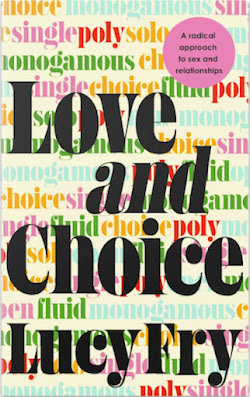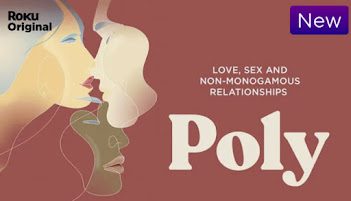Today is Metamour Day, "Honoring Polyamory's Most Distinctive Relationships." And not at all incidentally, stand with Ukraine.
Today, Monday February 28, is Metamour Day. Please share this year's graphic far and wide! Here's where best to share it from.

|
|
The winner of NCFS's Metamour Day 2022 Graphic contest was Nicole Kay of Dark Rose Press. Share it from here. |
For more than 20 years I have been studying polyamorous families with kids, and I have seen them face the usual difficulties that come with life – illness, economic challenges, divorce, disability, and the like. What has stood out to me about these families who remain together in long-term polycules – some of them for 60 or more years – is that the metamour relationships make or break the family over the long term. These emotionally intimate, non-sexual chosen family relationships are so important in polyamorous families that I made up the word polyaffective to describe them.Positive polyaffective relationships among metamours who become chosen family over time are the backbone of the poly family. Metamours who can’t stand each other and are never able to establish comfort (much less delight) in each others’ presence are not going to happily coexist over the long term. Metamours who add value to each others’ lives, however, can not only support each other when life inevitably throws them a curve ball, but also support the polyamorous relationship with their mutual partner if it falls on hard times....By promoting Metamour Day, NCSF hopes “to foster positive relationships between you and your metamours, whatever that might look like. It is not about forced compersion. It’s about communal appreciation within our family structures."If you are lucky enough to have a metamour with whom you share compersion, celebrate them on February 28!
...Polyamory stresses not so much the openness to having multiple romantic relationships, but the openness to having metamour relationships with other people. It is this second kind of openness – the openness to metamour contact and communication – that singles out a polyamorous person among other people who might be open to a multiplicity of romantic and/or sexual relationships, e.g. from such a monogamist who leads a double life....In a paper that appeared in the Journal of Applied Philosophy, Luke Brunning (2016) writes that “the presence of a third party is a constitutive feature of polyamory” (p. 9), and the third party is typically one’s metamour or a potential metamour. ... In addition to that, I argue that accepting the prospect of one’s partner dating another person entails agreeing to be in a relationship with this person, even if this relationship might remain indirect.... Metamour connections are the underpinning of the fabric of polyamory, and they deserve as much academic attention and research as the polyamorous romantic connections. ...
 |
1. Backup, with benefits. ...like when (I've actually heard this one) "I don't like anal sex but my partner does, so when he finds a partner who likes it, I cheer and feel compersive!" Can also be applied to more mundane but equally subjective activities like skiing, movie-going, an affinity for jazz or love of dogs. ...2. The Emergency Contact. ...3. The Distraction. Someone who you know loves your partner who will go on a date with them while you're on a date with a Very Hot New Person.4. The FWB for a threesome weekend, etc. Why not? ...5. The sister/brother/wife/husband you always dreamed of. Share the pain, the joys, the chores and burping the baby. We. Are. Family. (If you can't hear funky music by now, you're younger than I am, but that's okay, sister)!6. This is the biggest one, and the one I'm not at all inclined to make fun of. It's more than family. It is, in fact, true intimacy -- with someone your intimate partner is intimate with. With someone who loves your partner so much -- as you love them so much -- that the love just carries on over to everyone who is doing the loving.
-------------------------------------------------------------------------------------------
Labels: #MetamourDay, Metamour Day, metamours

















